A gorgeous vanity isn’t limited to the bathroom since most traditional vanities are freestanding and can fit just about anywhere. And if your vanity is painted white, then you are probably wondering what color the accompanying mirror should be. While white usually offers too much freedom, the vanity and mirror really need to agree. So, we’ve put together a guide on what colors will pair nicely between your mirror and white vanity.
Typically, the color of your mirror should coordinate with a white vanity rather than stick out. It doesn’t have to be an identical match, but it should agree. Also, the mirror color should fit nicely with the overall color scheme of the room and home. So, you can consider deliberate contrast, neighboring colors, or other neutrals for your mirror:
- White to match
- Blue, gray, and black for a cool contrast
- Brown or natural wood
- Frameless for no color
Choosing the right mirror for your vanity can make or break the fixture since they need to work hand in hand. Both command lots of attention and will be used on a daily basis. Keep reading to learn how to match your mirror, what kind of mirrors are available, and what size mirror is ideal for your vanity.
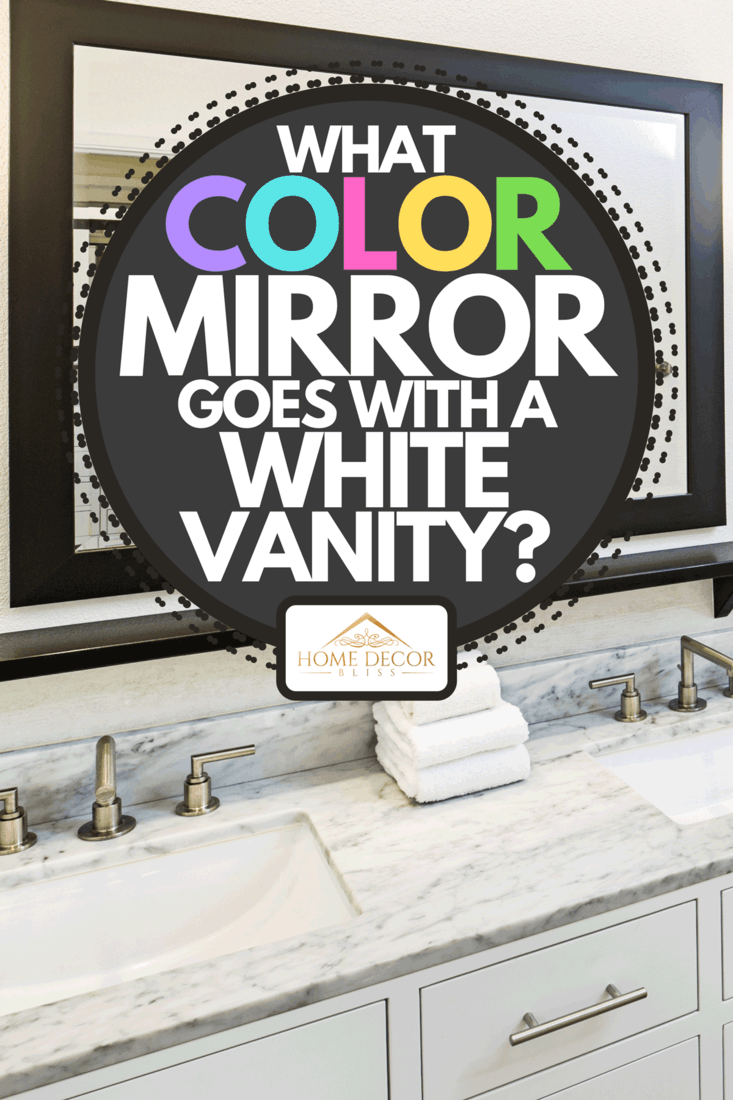
Does the Bathroom Mirror Frame Have to Match the Vanity?
Most of the time, you’ll find vanities that are sold alongside tie-in accessories. These additions should offer an identical paint job, and can often include a mirror. It usually isn’t ideal to give fixtures an identical match because it creates a sense of redundancy.
However, a vanity serves a very specific purpose. It isn’t just storage but is also a space reserved for personality and style. Even in a bathroom, these qualities set a vanity apart from traditional cabinets under the sink. In other words, the vanity’s sole function is meant to serve alongside a mirror, permanently combining them as a single fixture.
As such, even colorful vanities that don’t offer the freedom of a white canvas will have a mirror with an identical frame color. This uniform look offers lots of consistency.
White to Match
We sometimes add affiliate links and content that was curated and created by our team with the help of advanced ai tools to help showcase the best design styles.
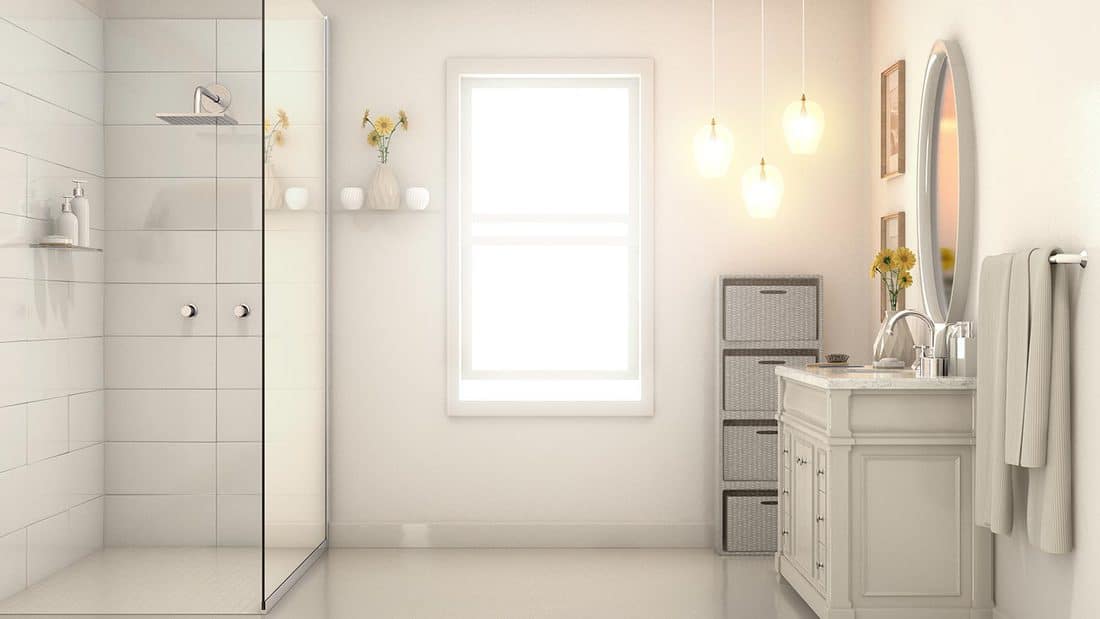
Consider that white is neutral, meaning that it is absent of any actual color. It is also warm in temperature. This means your white vanity is highly reflective, and will highlight any color that is not white. That would draw a serious amount of attention to your mirror’s frame, which isn’t always ideal.
For example, minimalist interior designs will always require smooth lines and spaciousness. Using a mirror with a different color on your vanity could potentially make the area look more cluttered than it should in that scene. Meanwhile, using a white mirror is a perfect continuation of that style.
And when your vanity and mirror work together, they can also be equally flexible with the rest of the room. But your mirror could even use a different shade of white, as long as it stays within at least two or three shades apart. This is highly important since the mirror is at eye level while the vanity is lower.
Blue, Gray, and Black for Cool Contrast
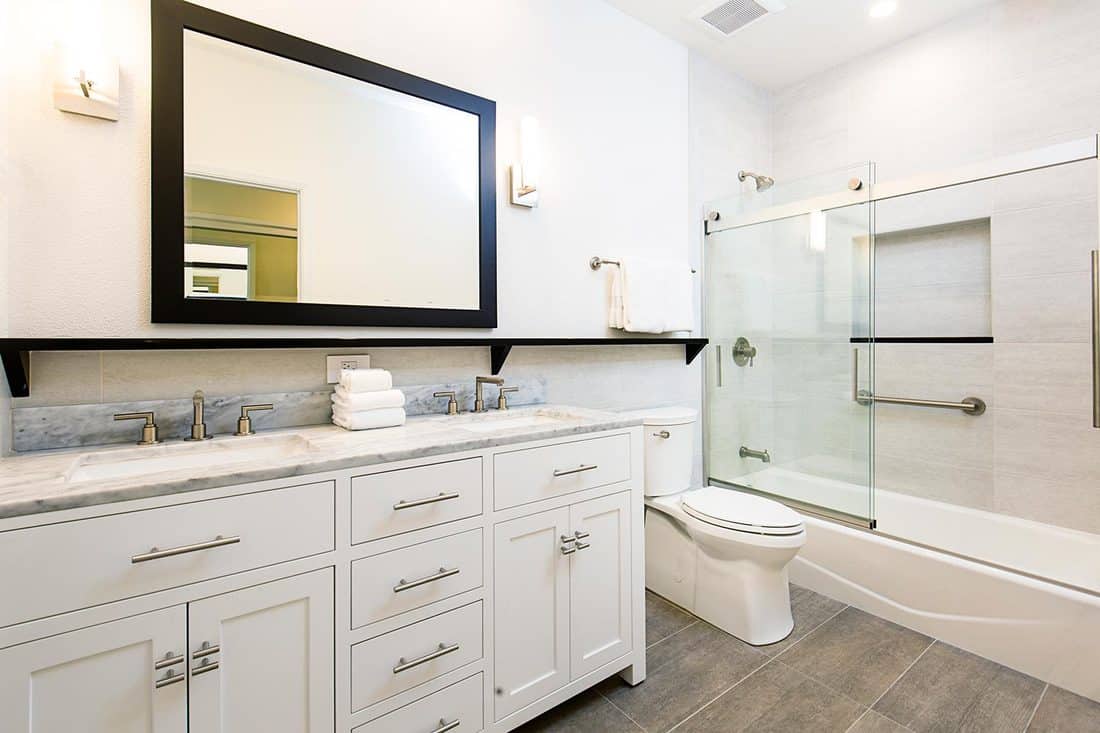
Gray and black are neutrals, just like white. So, they are just as pliable, but they are also much cooler in temperature. This is an effective way to make a bold statement without throwing off the entire room.
Gray and black will blend with the rest of the room but subdue a white vanity that is too bright. This can be especially useful in bedrooms where pure white can either stand out too much or sadly disappear right into the walls.
You may also use a light blue frame in certain circumstances. Blue is a color that comfortably wears lighter shades without losing its cool temperature. This is ideal for places like the bathroom, where vanities are often found. Consider that blue will always carry the natural look of water. So, it will fit in with just about any bathroom. Even steely, modern scenes might accept darker blues since many metals are known to have blue undertones.
Brown or Natural Wood
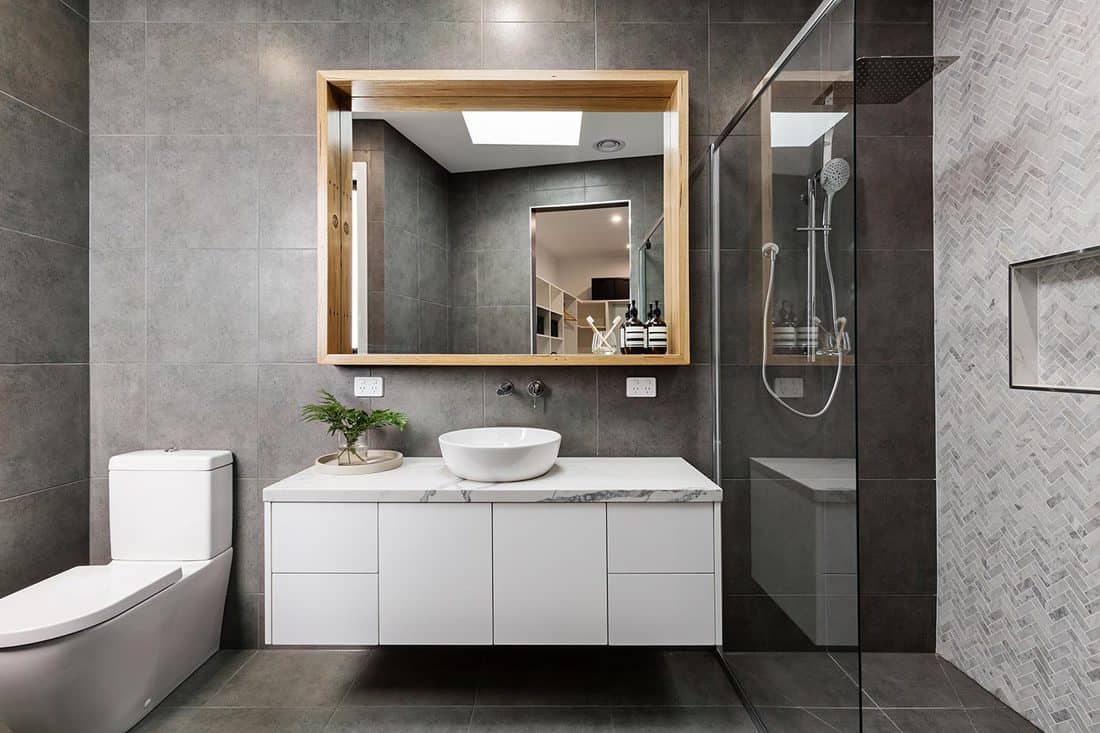
Wooden frames are available in a variety of styles and stains. You can even find wood with gray tones, which are useful for beach house interior designs. But most wood will have a natural brown foundation.
And fortunately, brown is a “near neutral,” which means it can work with nearly as many colors as pure neutrals. But it still appears to have something of a cooler orange tone. This makes brown a great way to bridge the white vanity’s brightness with the rest of the room.
Also, since many vanities are made from wood to begin with, there is a smooth connection to any brown mirror frame.
Built-in vanity mirror vs. standalone wall mirror
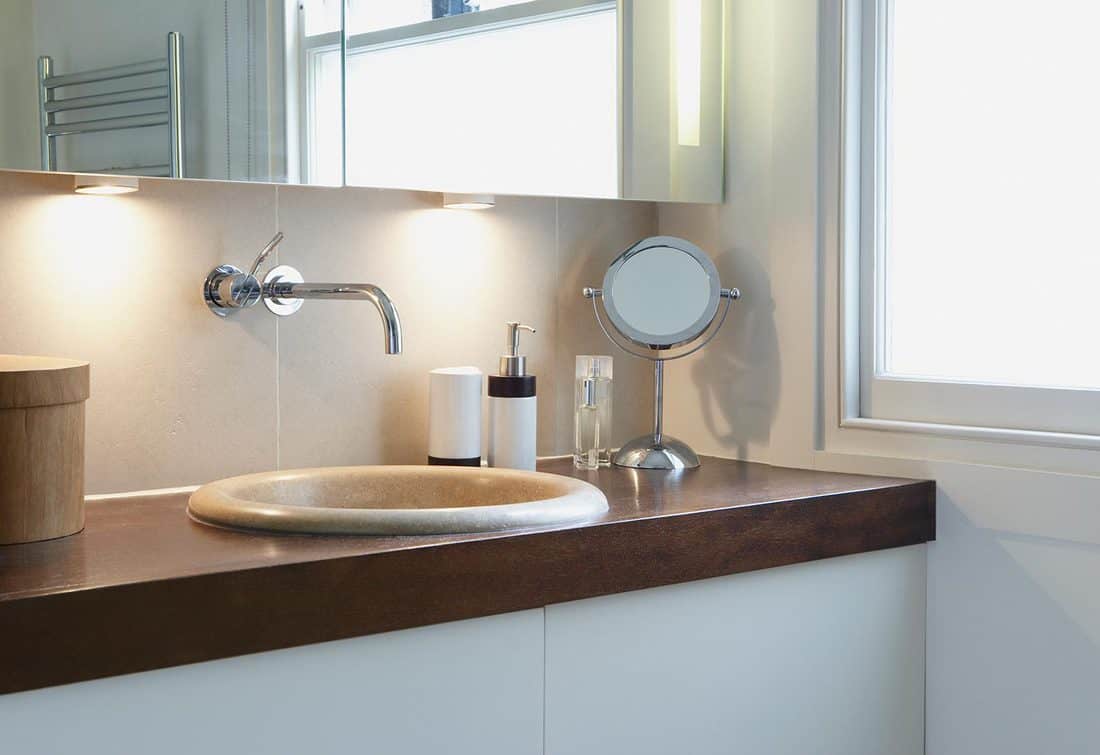
A frameless mirror will always successfully blend with the rest of the room because it is literally colorless. This can be useful if you want to create a clear border between the vanity and the mirror. They would not act as one fixture, but the mirror also wouldn’t have a distracting frame. The wall will serve as the canvas for the mirror, instead of the vanity.
That can be a terrific way to simplify the room and make it feel more spacious. The vanity no longer seems to extend as high as the mirror. In fact, this can even allow the vanity to be even more highlighted since the mirror won’t draw any attention from the fixture. You can read the post How To A Hang Bathroom Mirror [9 Simple Steps] to learn how to properly install a new mirror.
Framed vs frameless bathroom mirror
Deciding to omit a frame from your bathroom mirror will have the exact same effects on the rest of the room as it would on the vanity beneath it. You have more room to work with and don’t have to worry about conflicting colors.
However, you might also avoid wooden mirror frames so that you don’t end up with troublesome water damage. Stray water in the bathroom can sometimes warp and weaken wood, or even allow mold to grow. This tends to happen when the wood isn’t finished or re-finished in time.
How large should the bathroom mirror be in relation to the vanity
Generally speaking, it’s ideal to make sure the bathroom mirror is slightly shorter than the vanity. This should measure around two inches less than the length of the vanity countertop. However, the mirror can also measure equally with the vanity, as you ordinarily find with a traditional fixed cabinet.
The fact is, there are many factors that might come into play if you want the mirror to look perfectly proportionate. You can read the post How Big Should A Bathroom Vanity Mirror Be? for more details on everything you should take into consideration.
Summary
Vanities are a tremendous source of style and fashion, and they work well outside of the bathroom too. But now you understand what relationship many different kinds of mirrors and frames will have with a new vanity. So, you’ll be able to complete any room with the right design and attitude for you.
